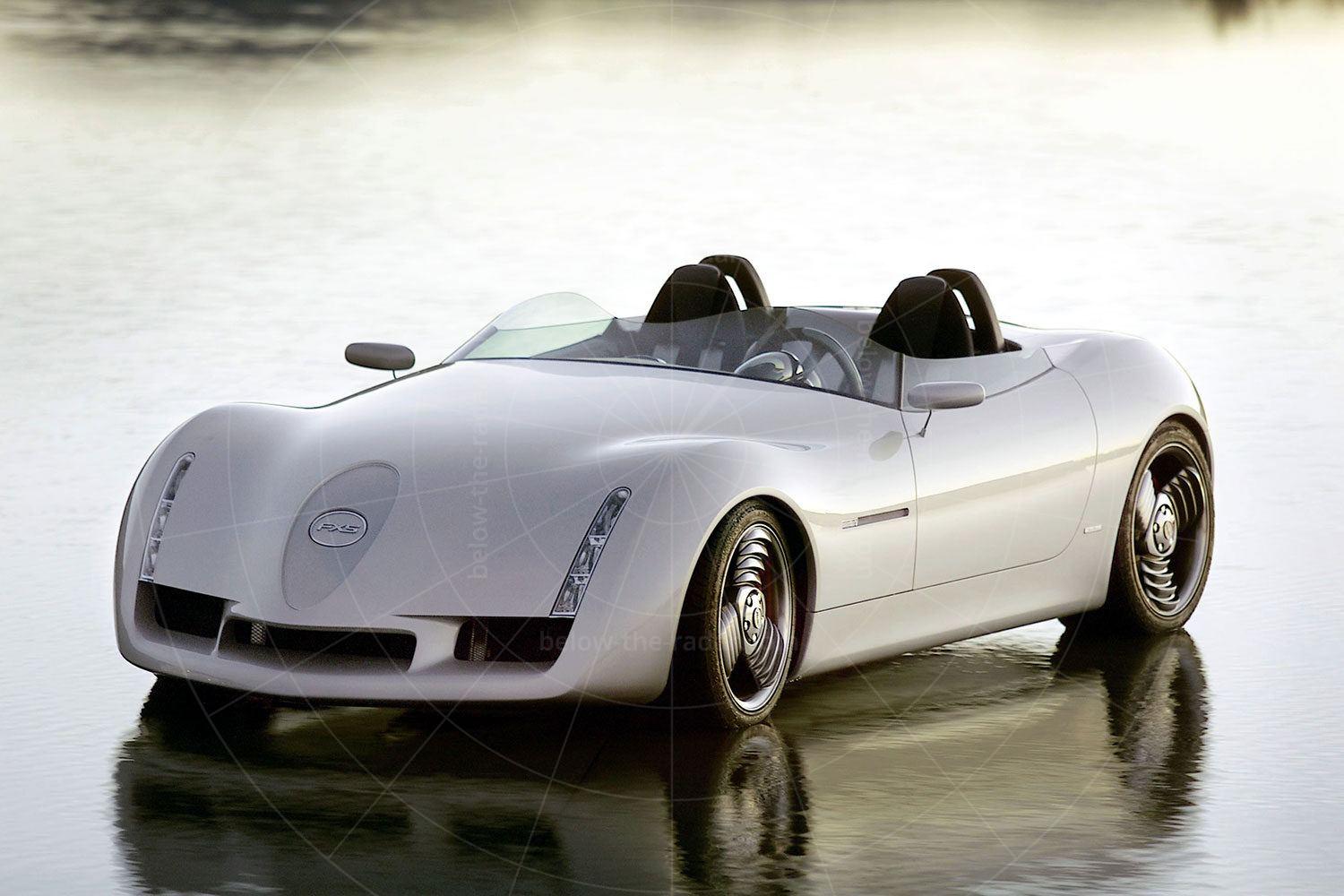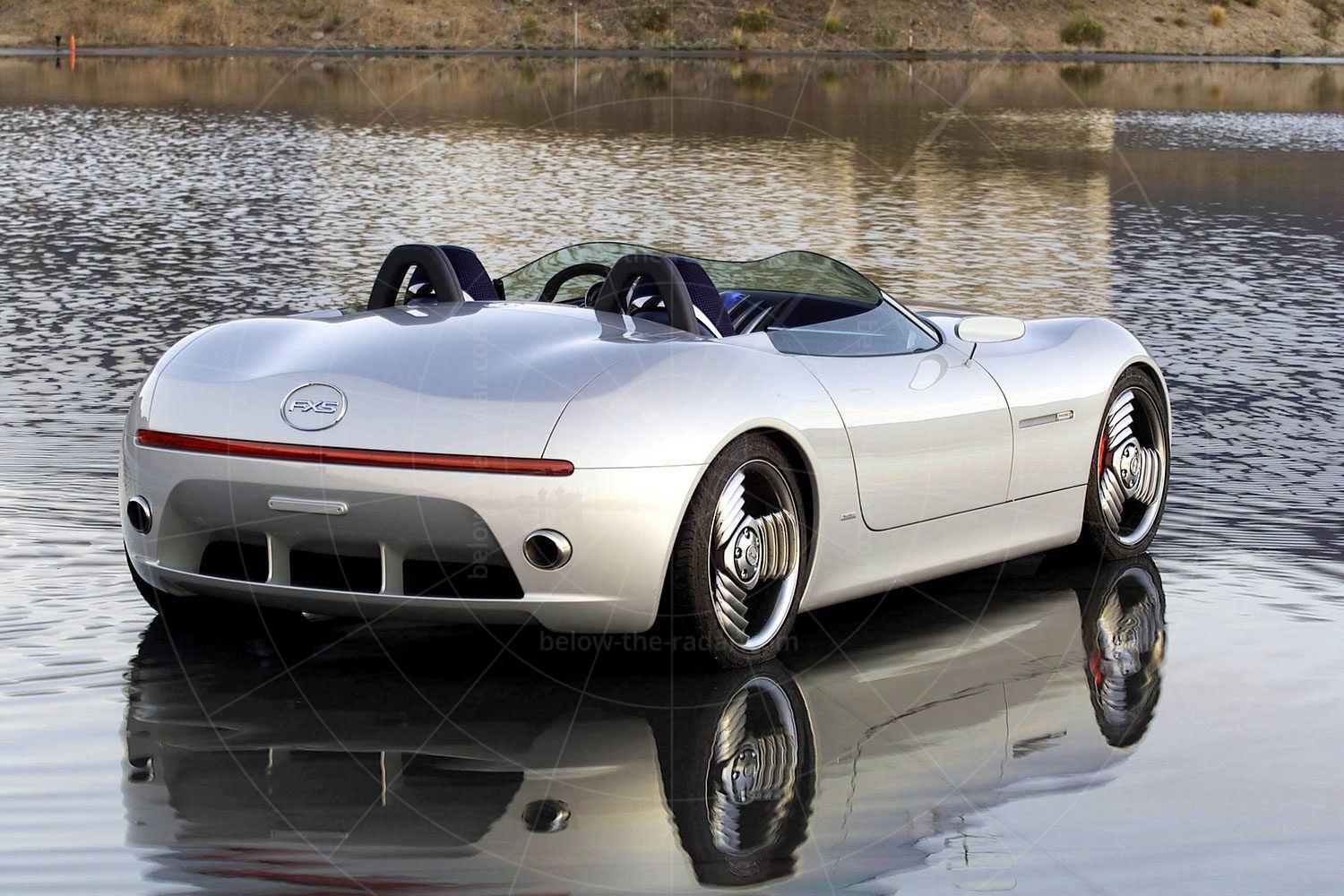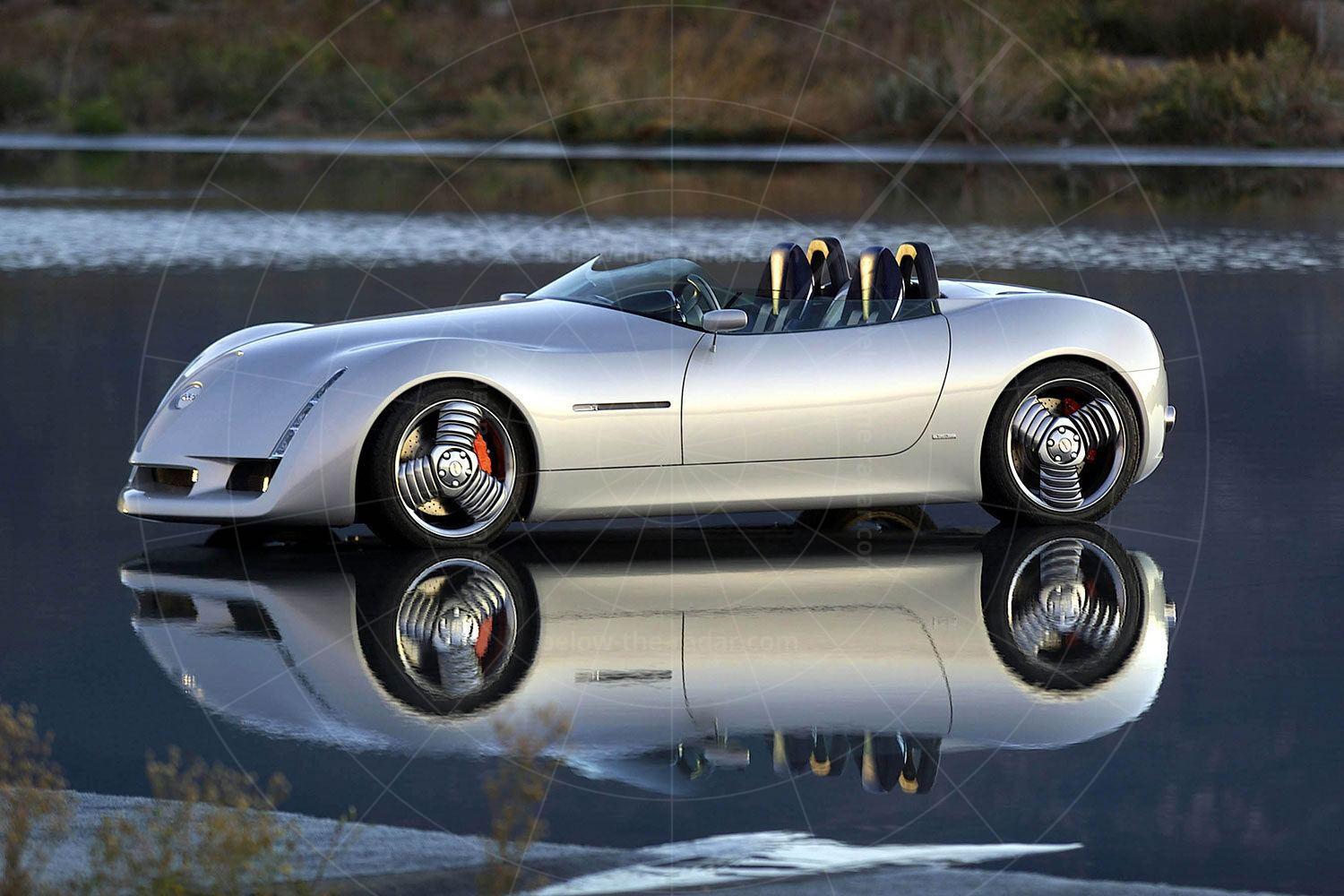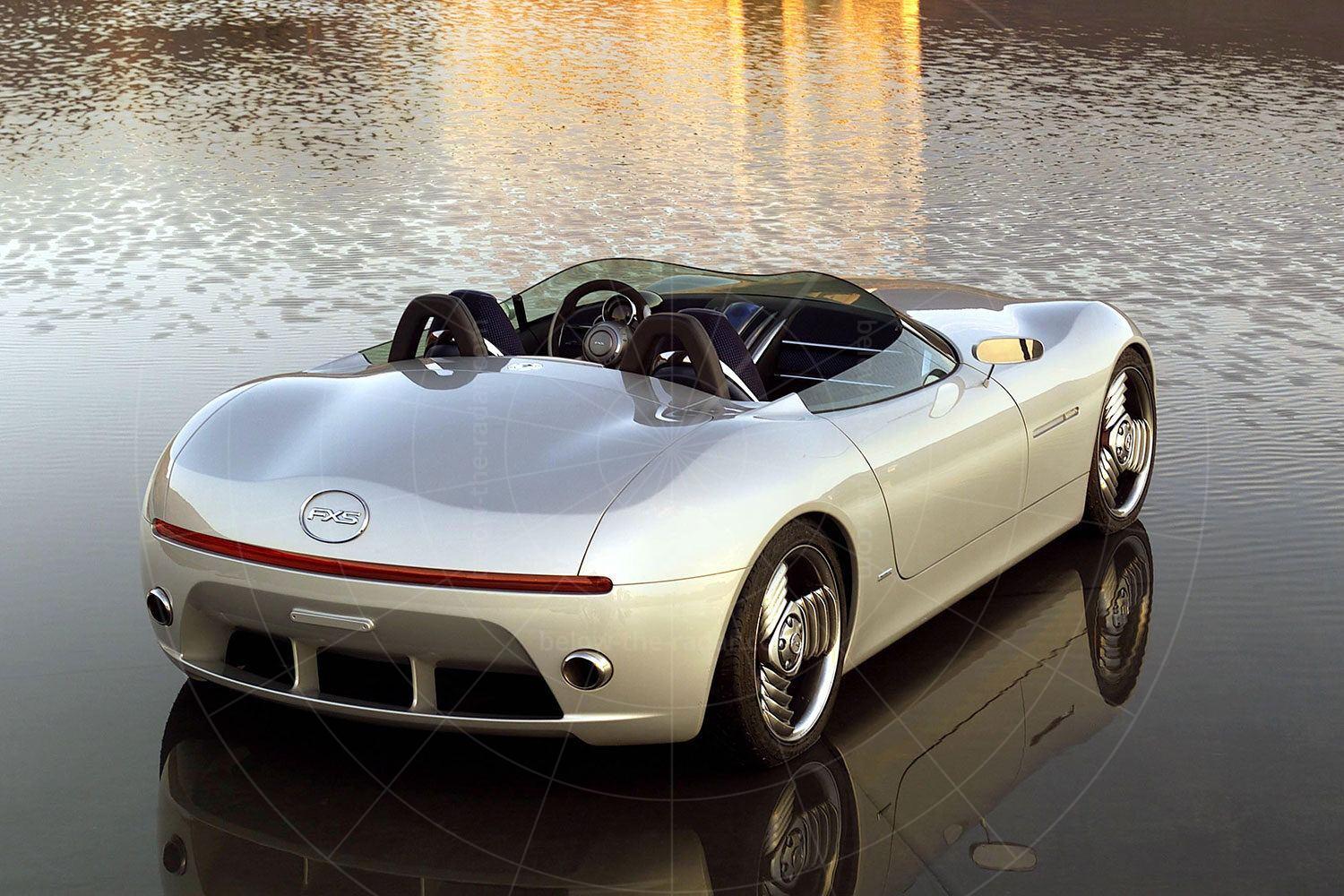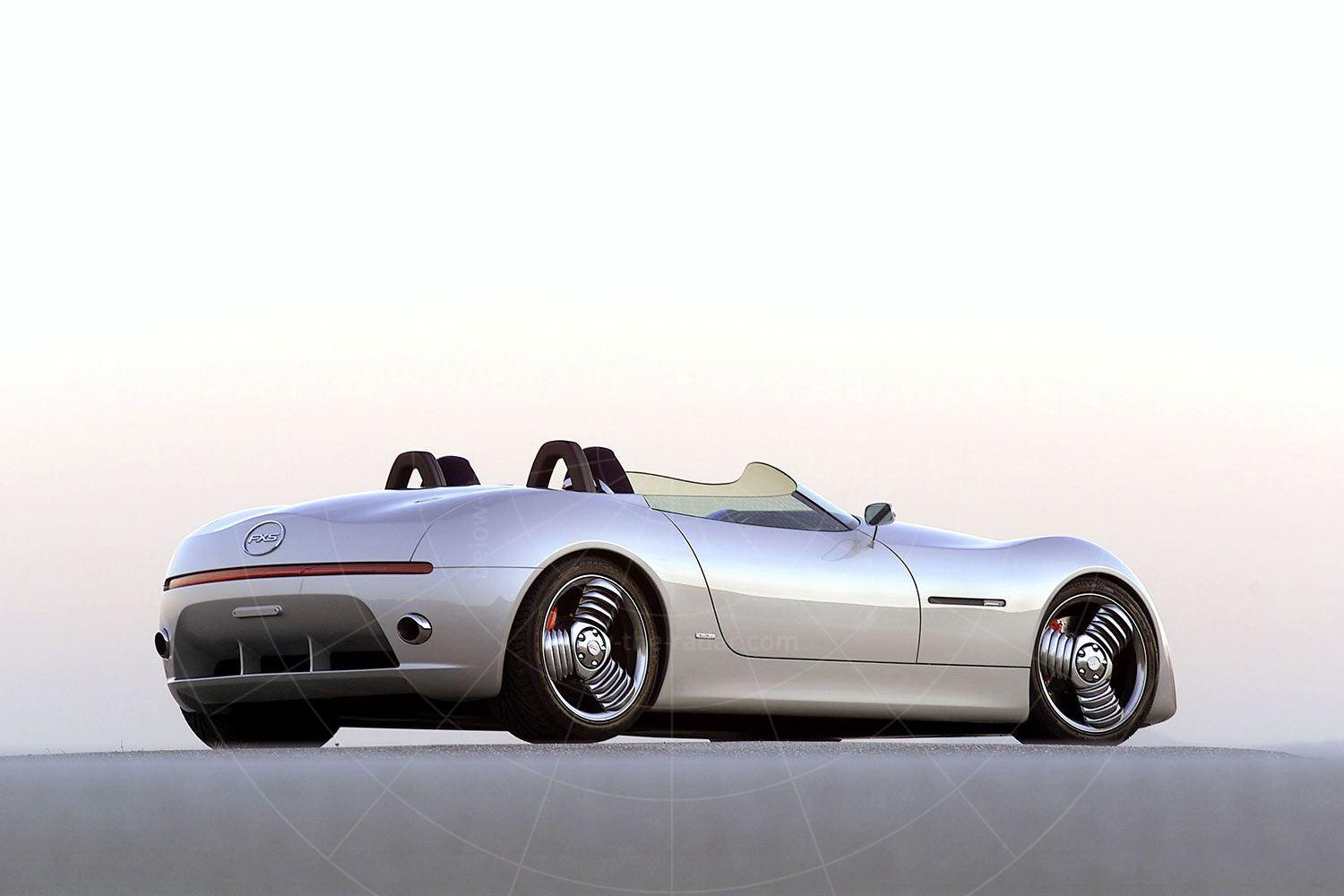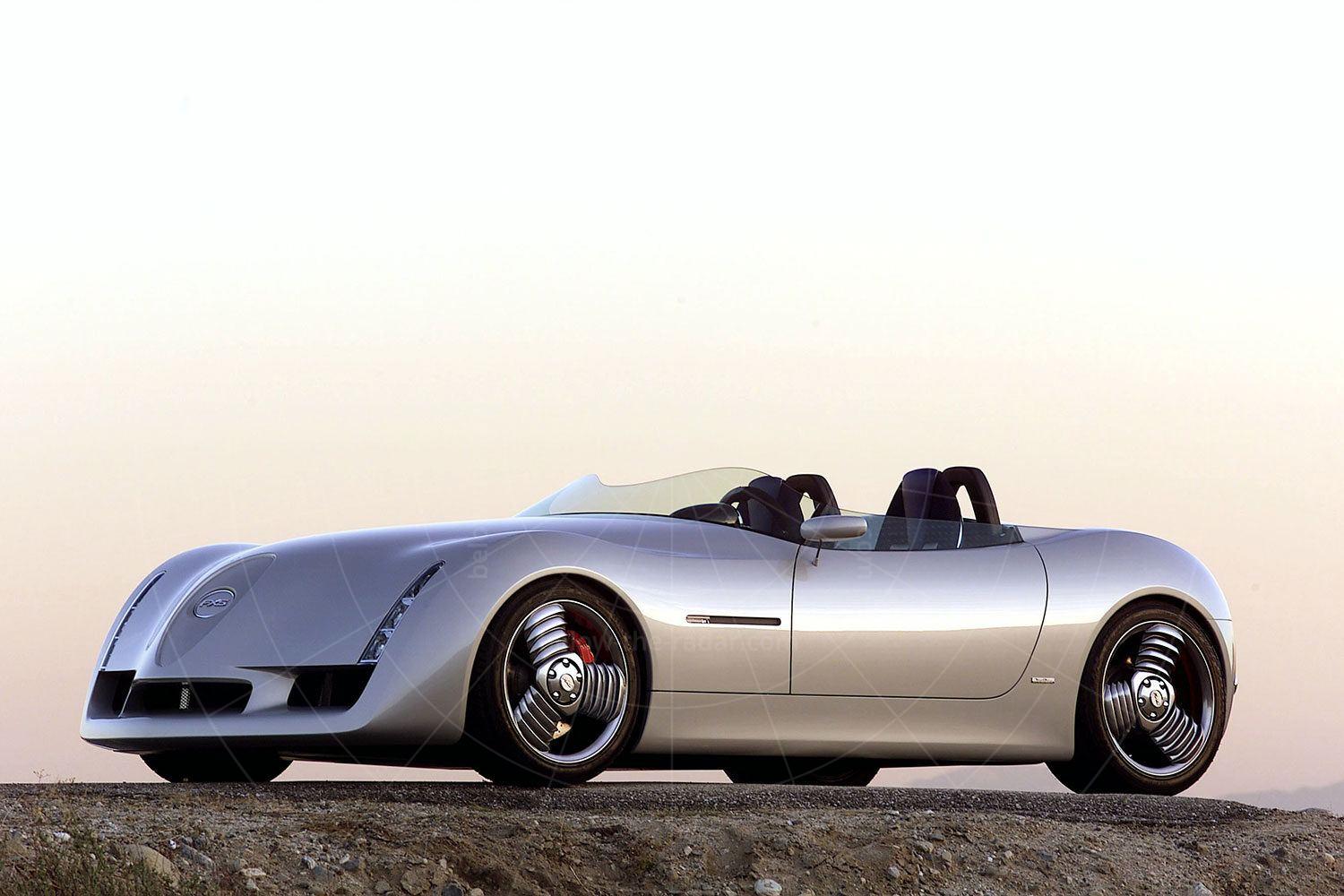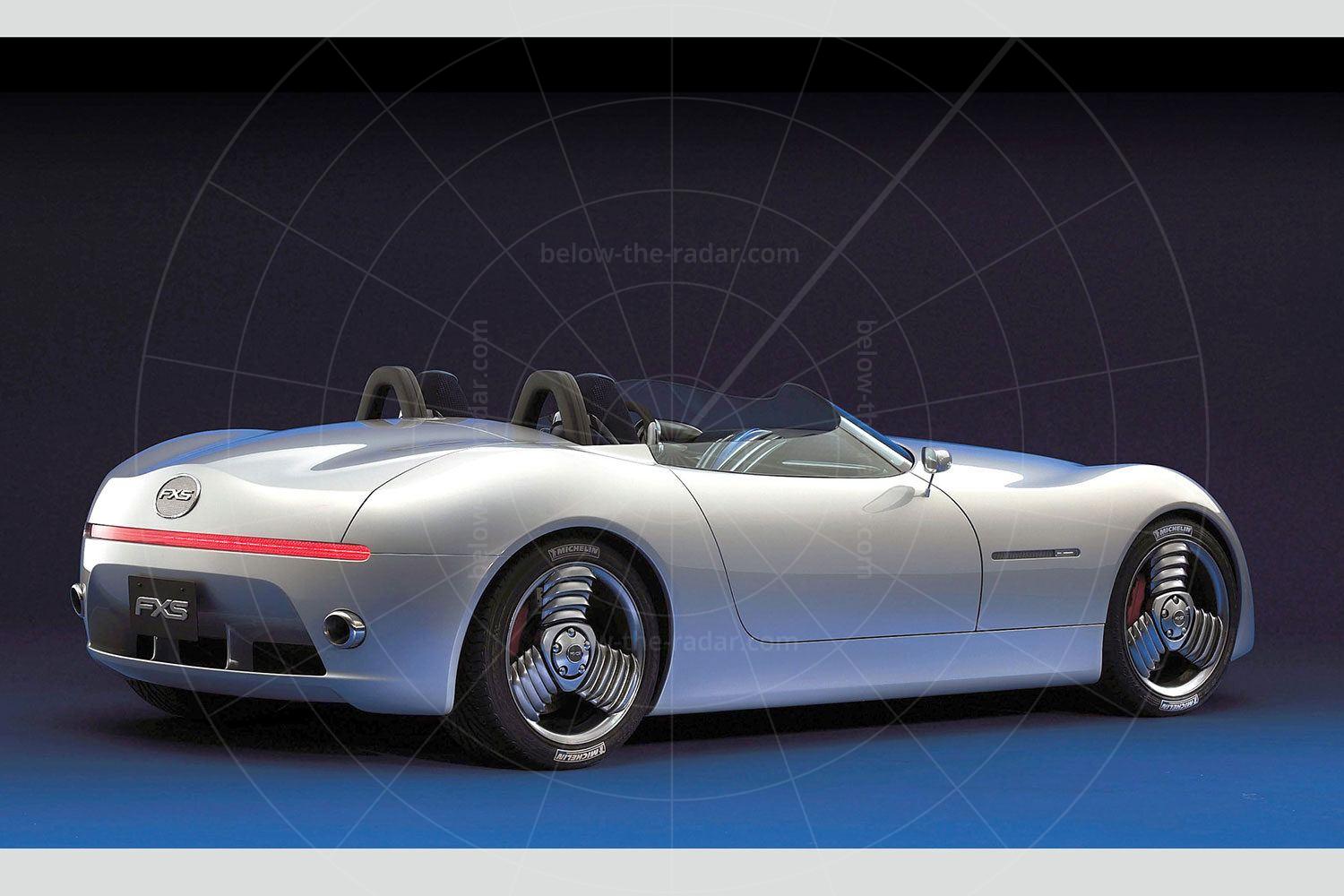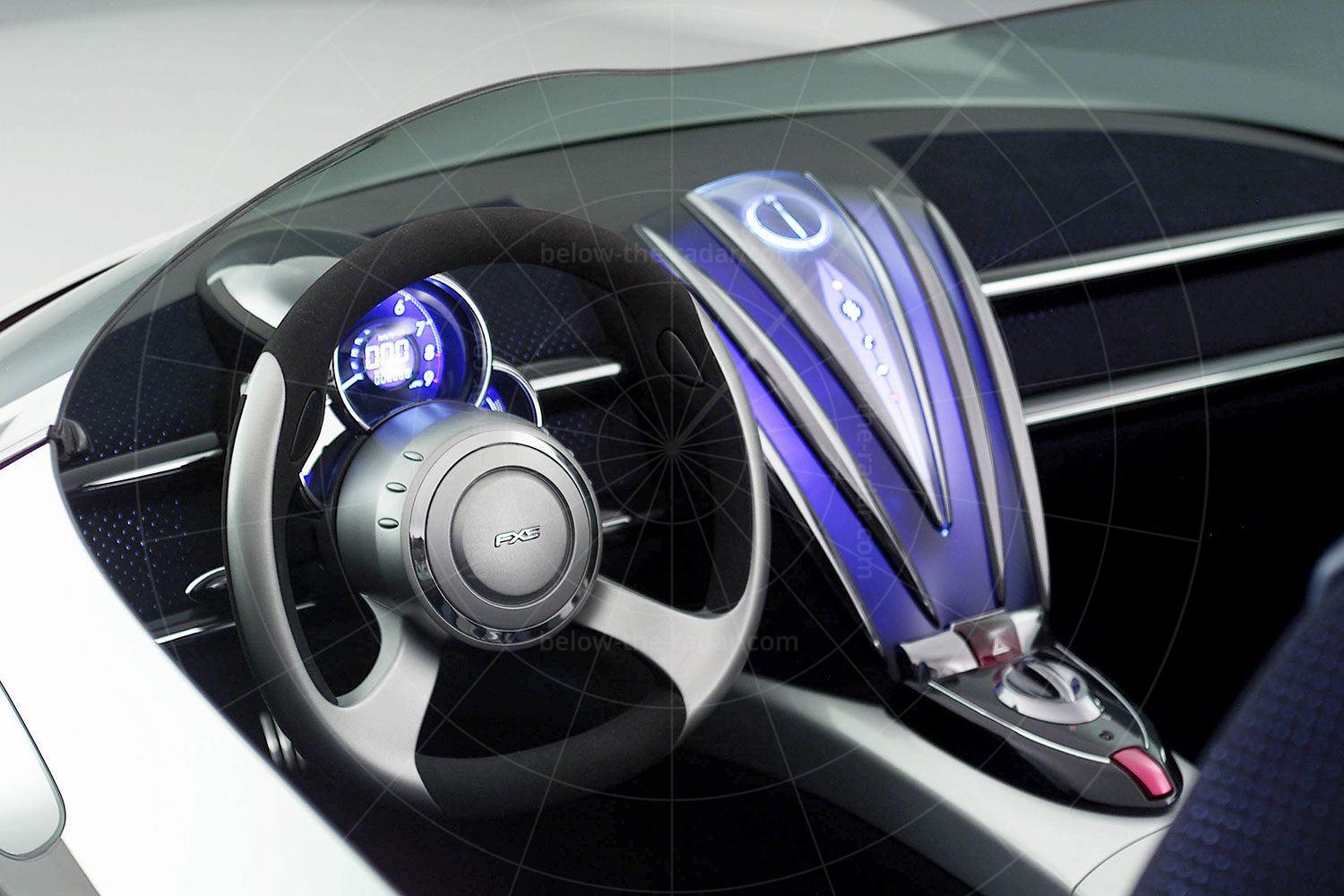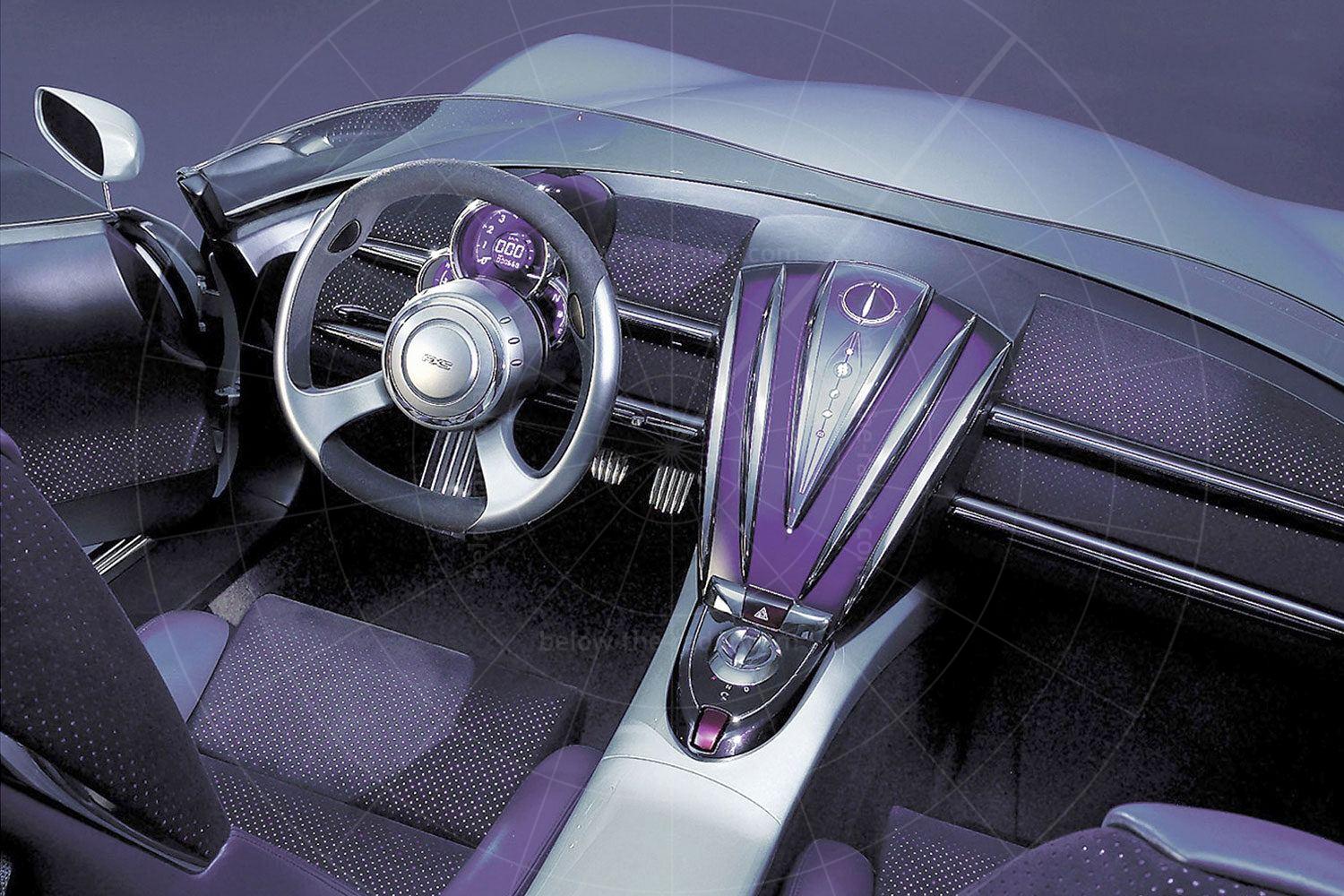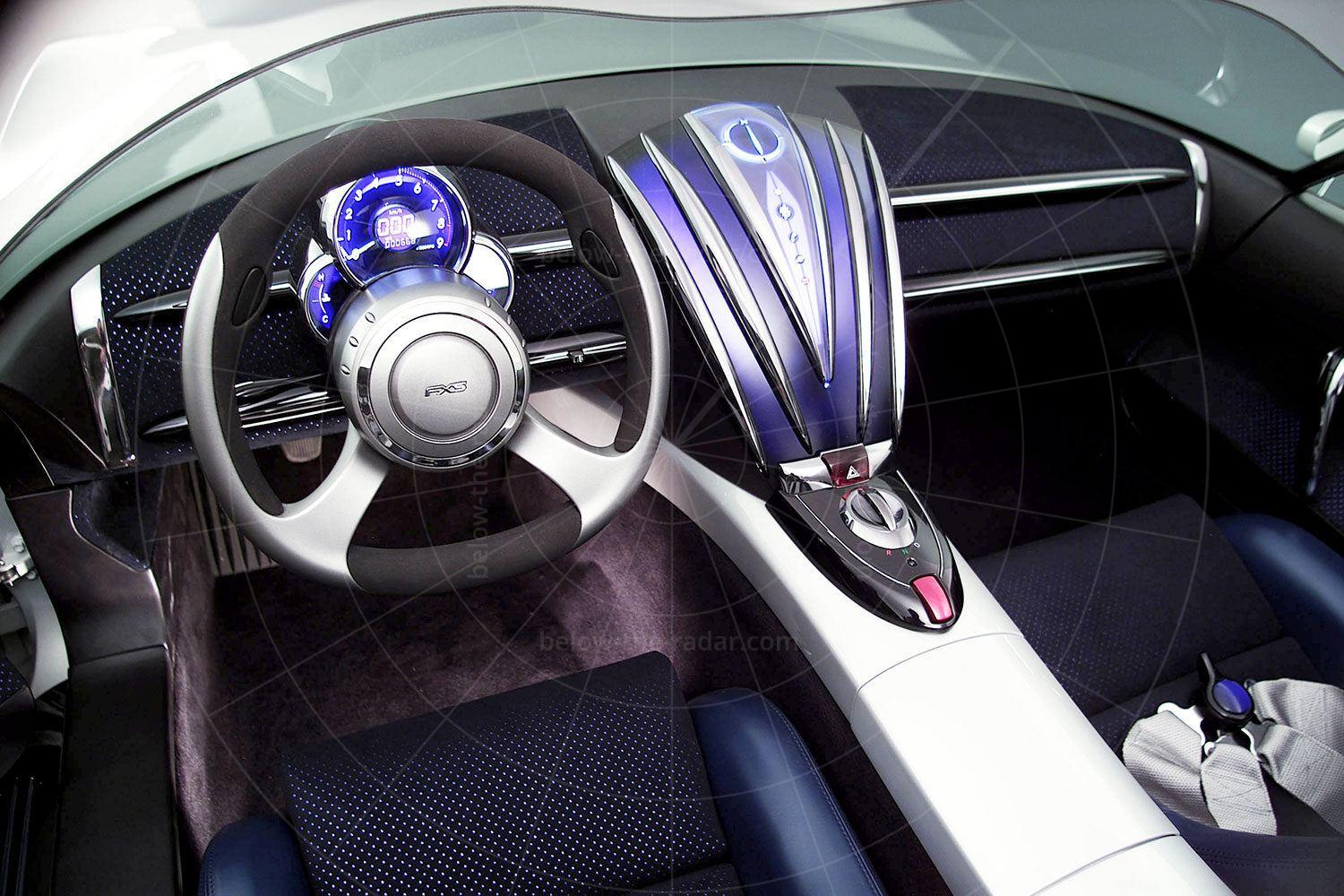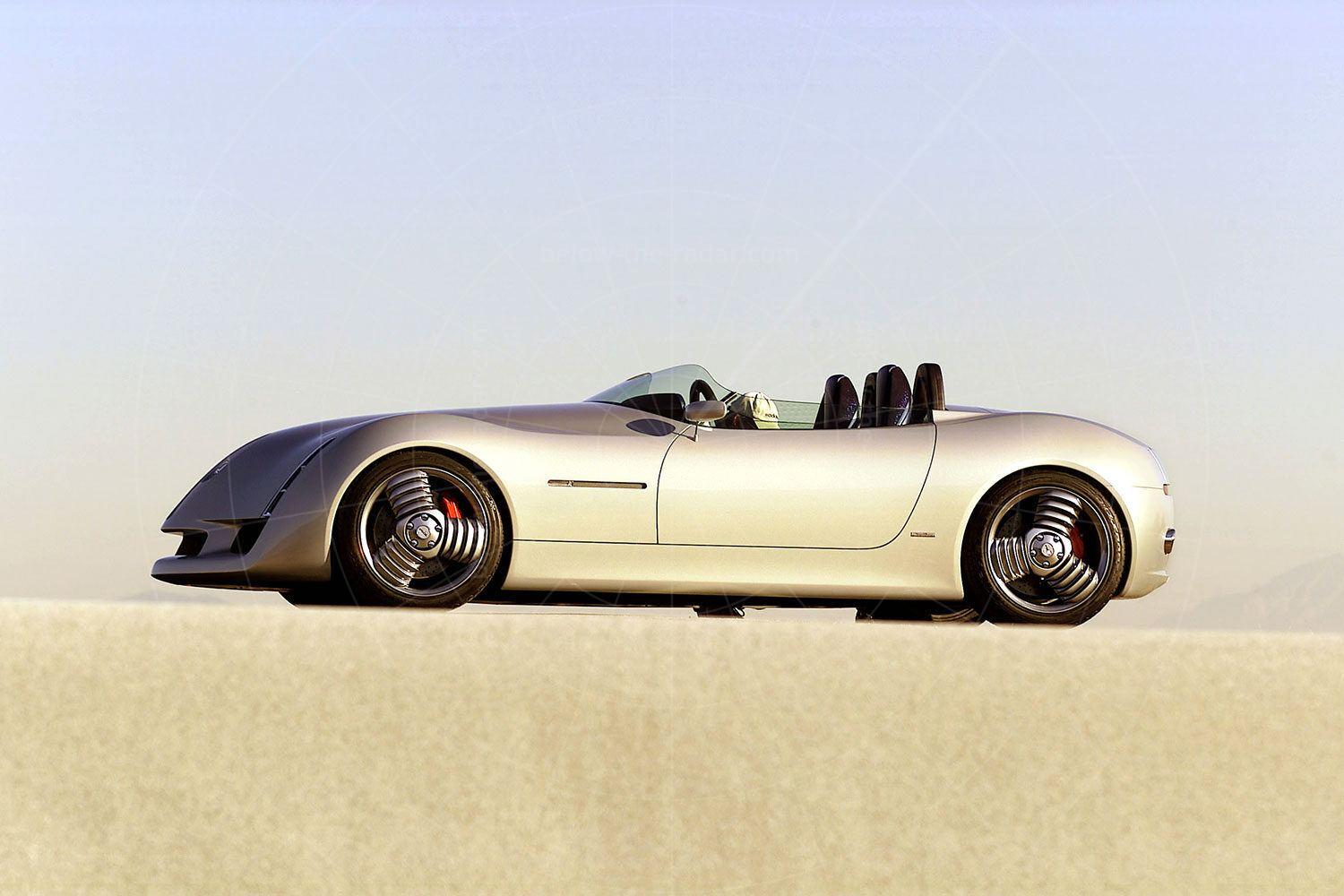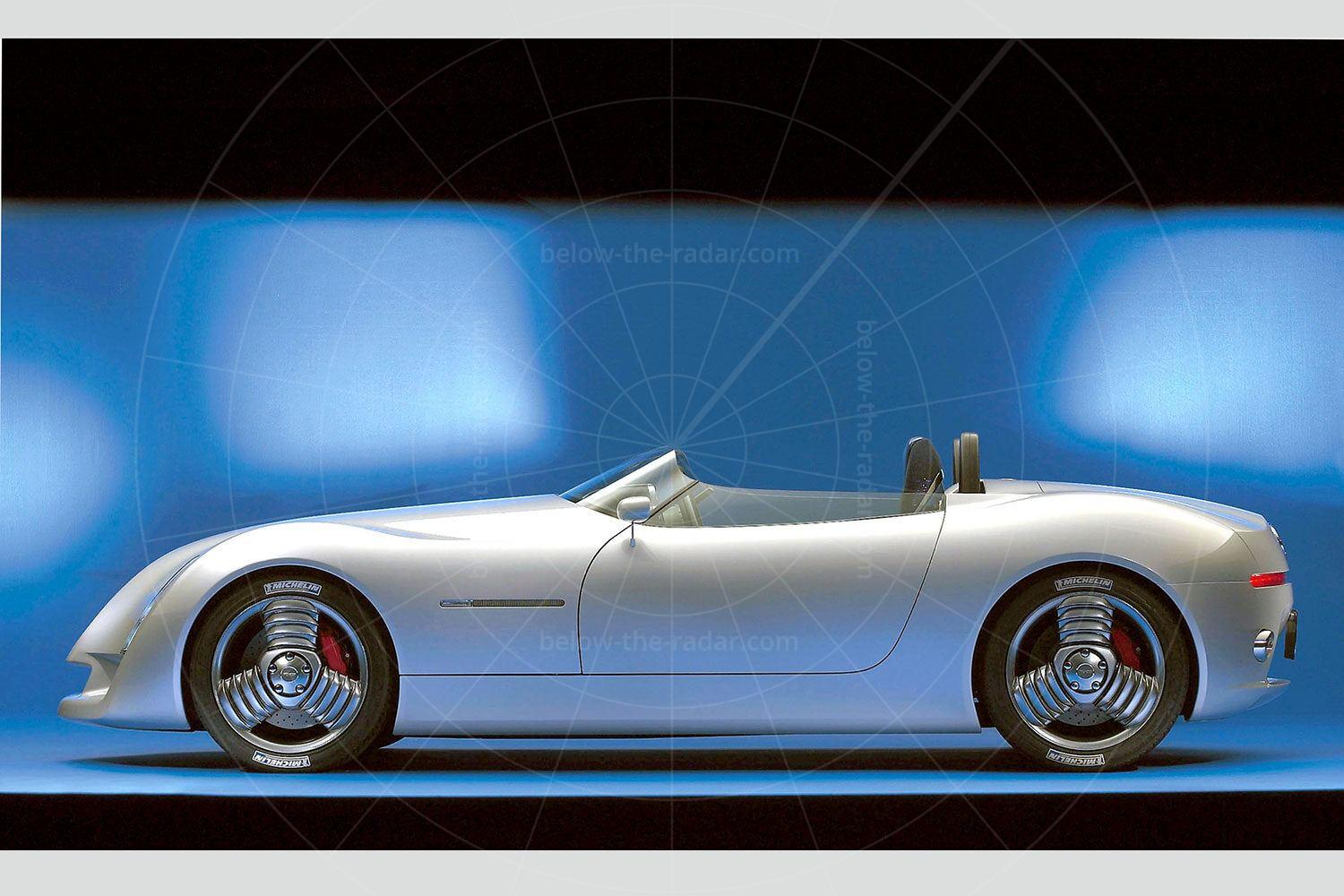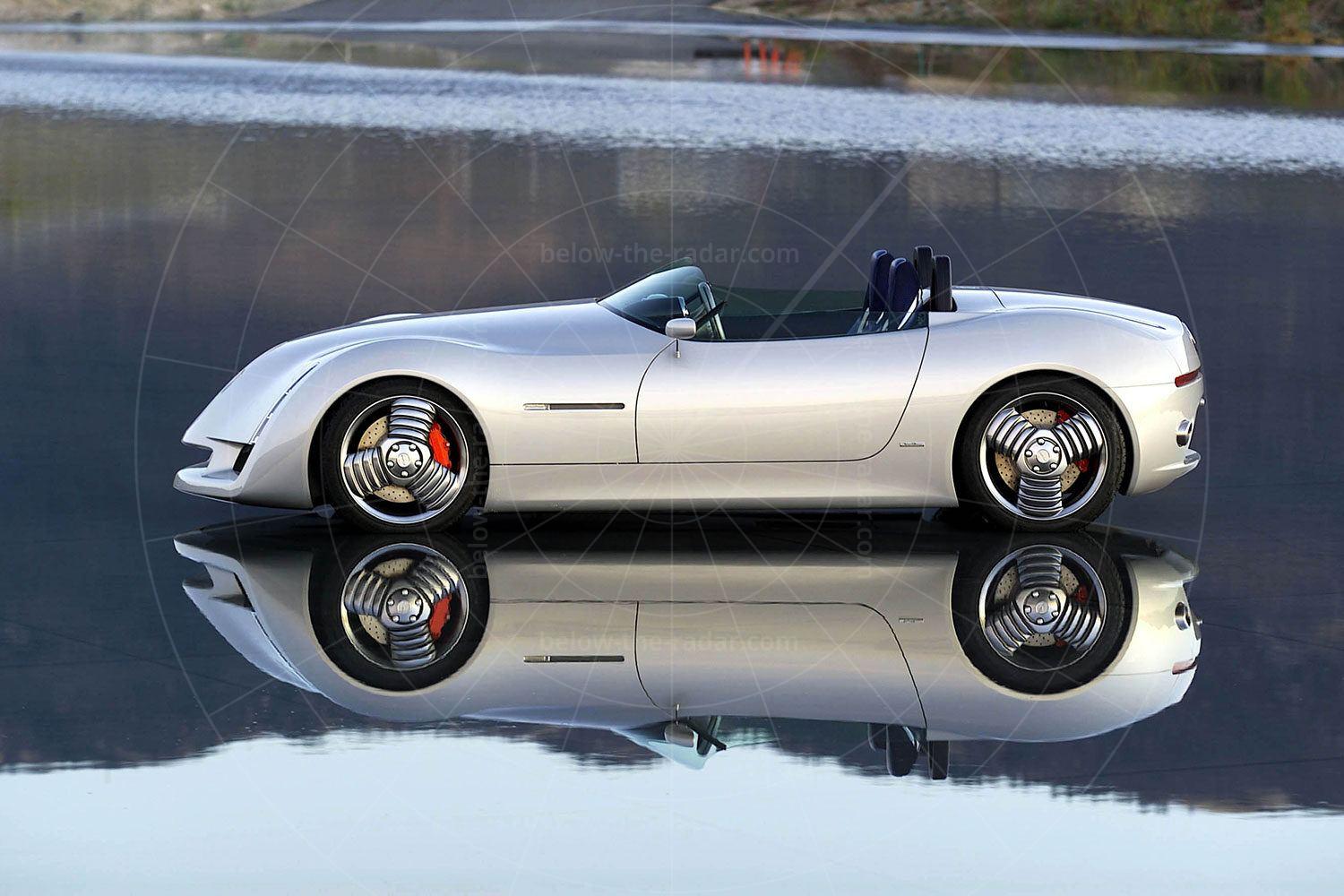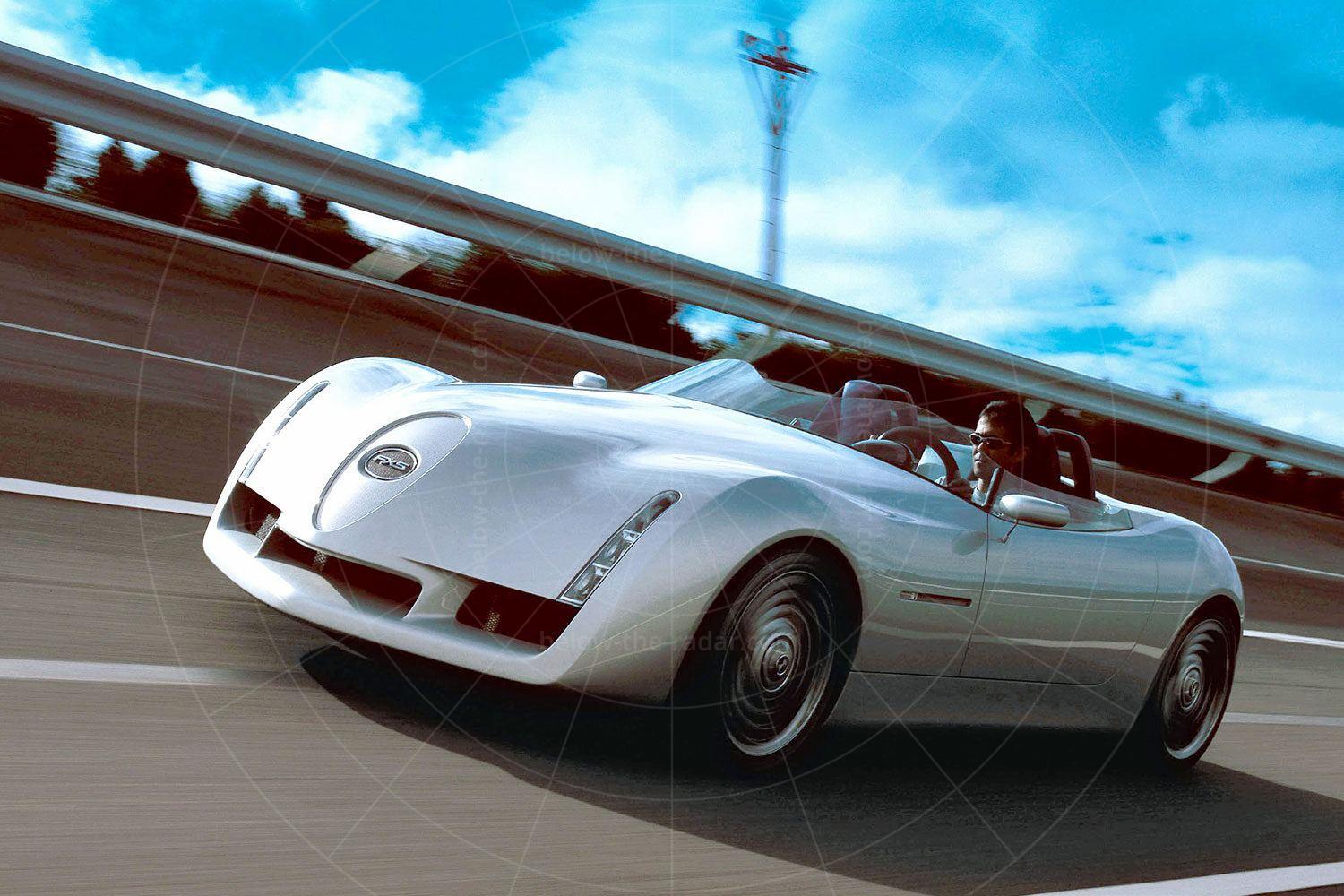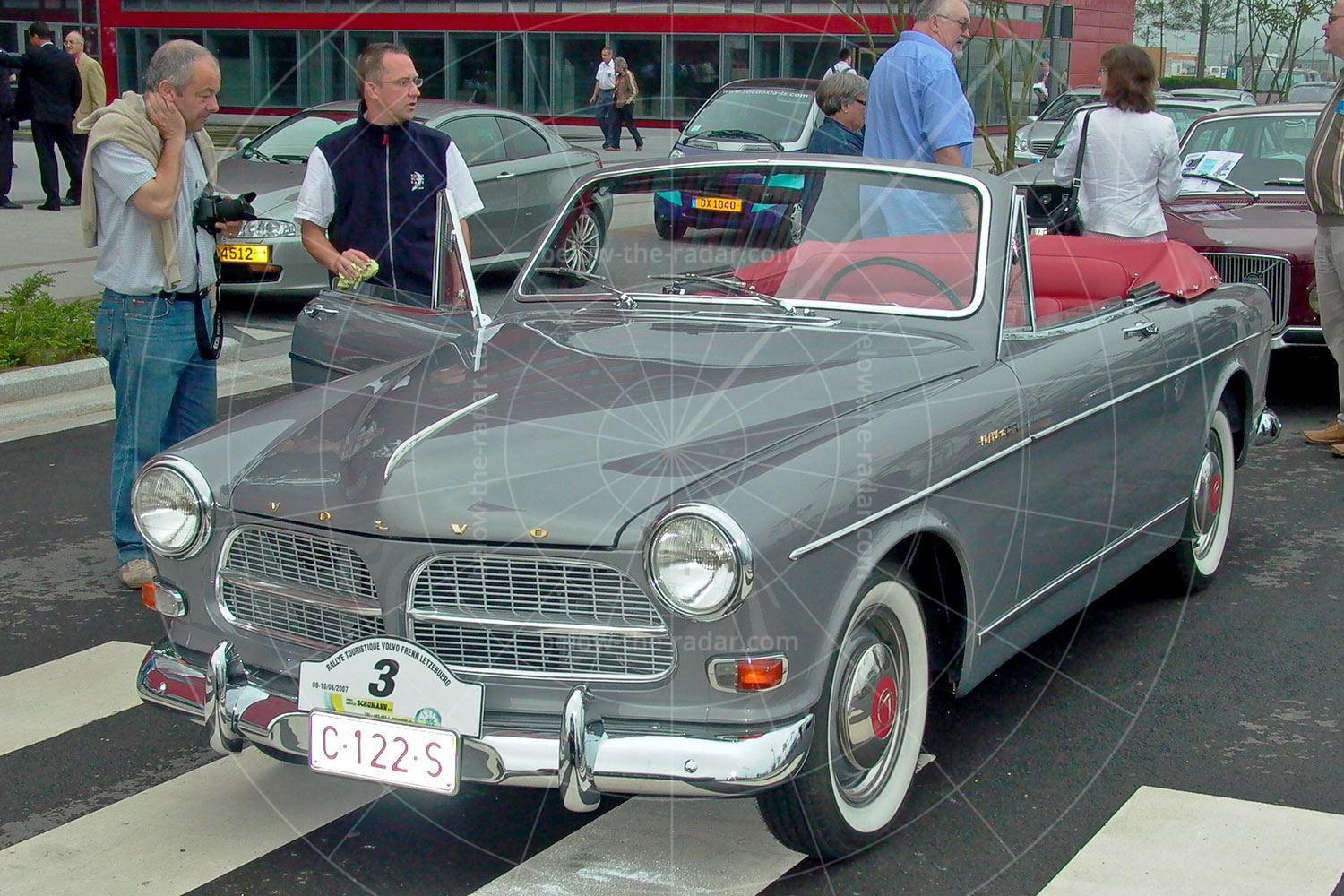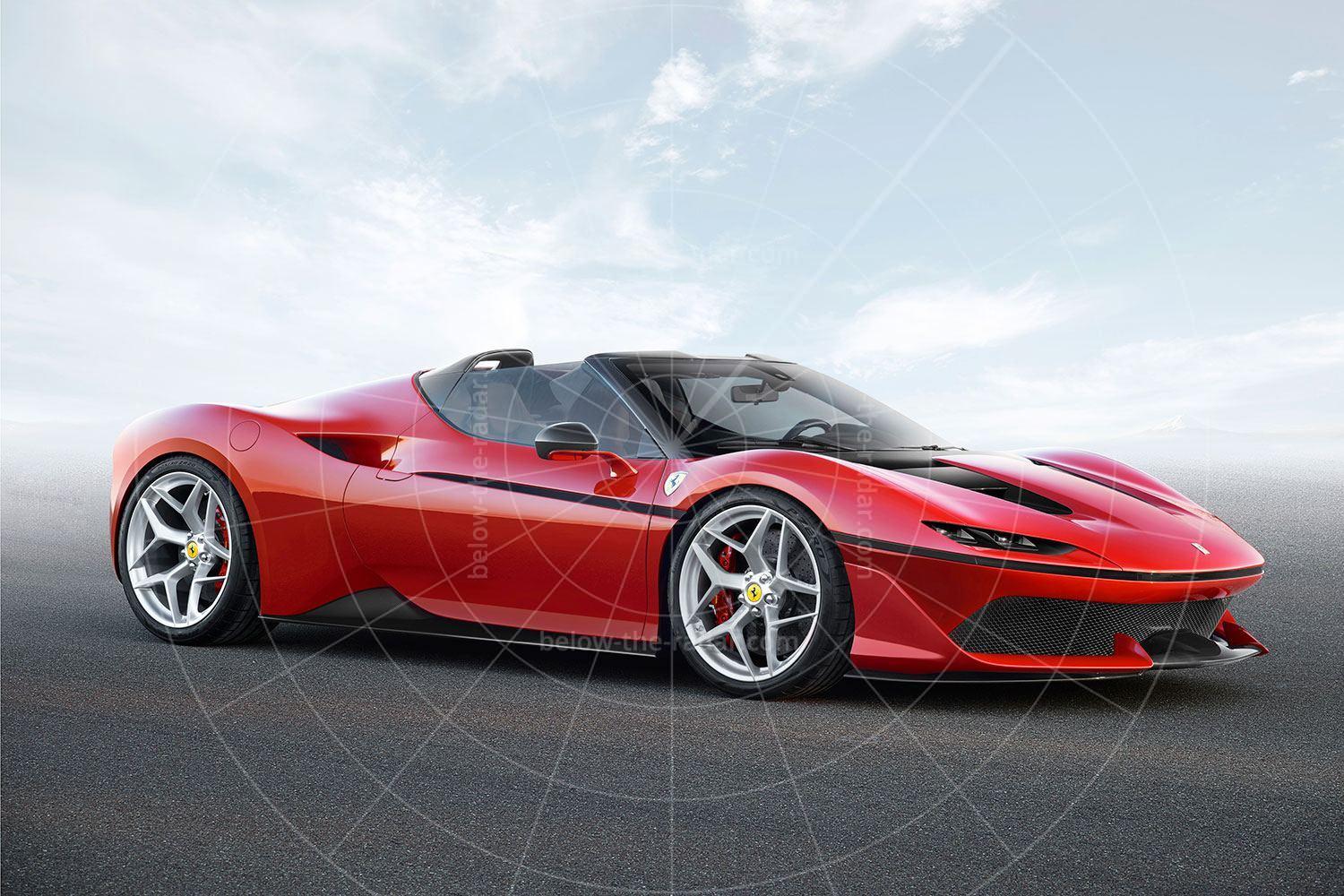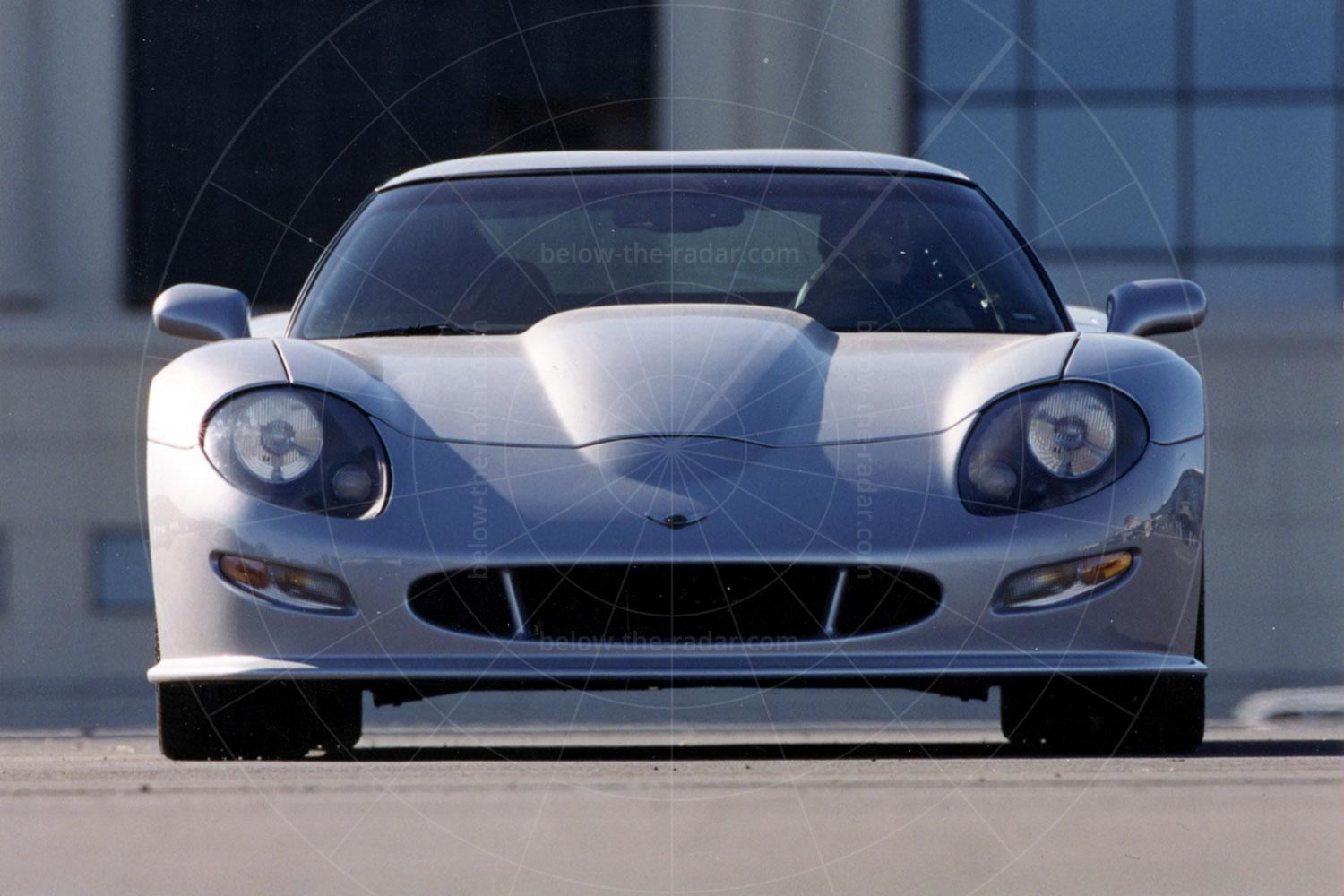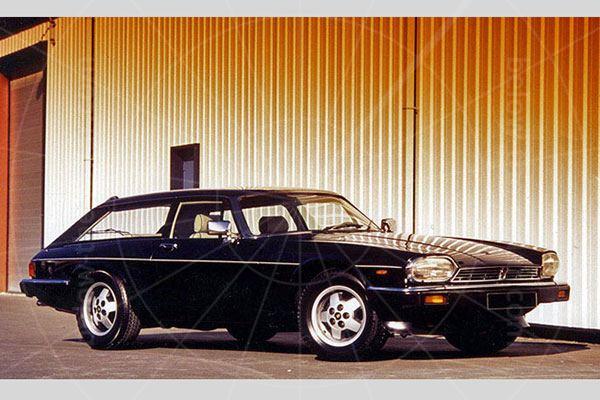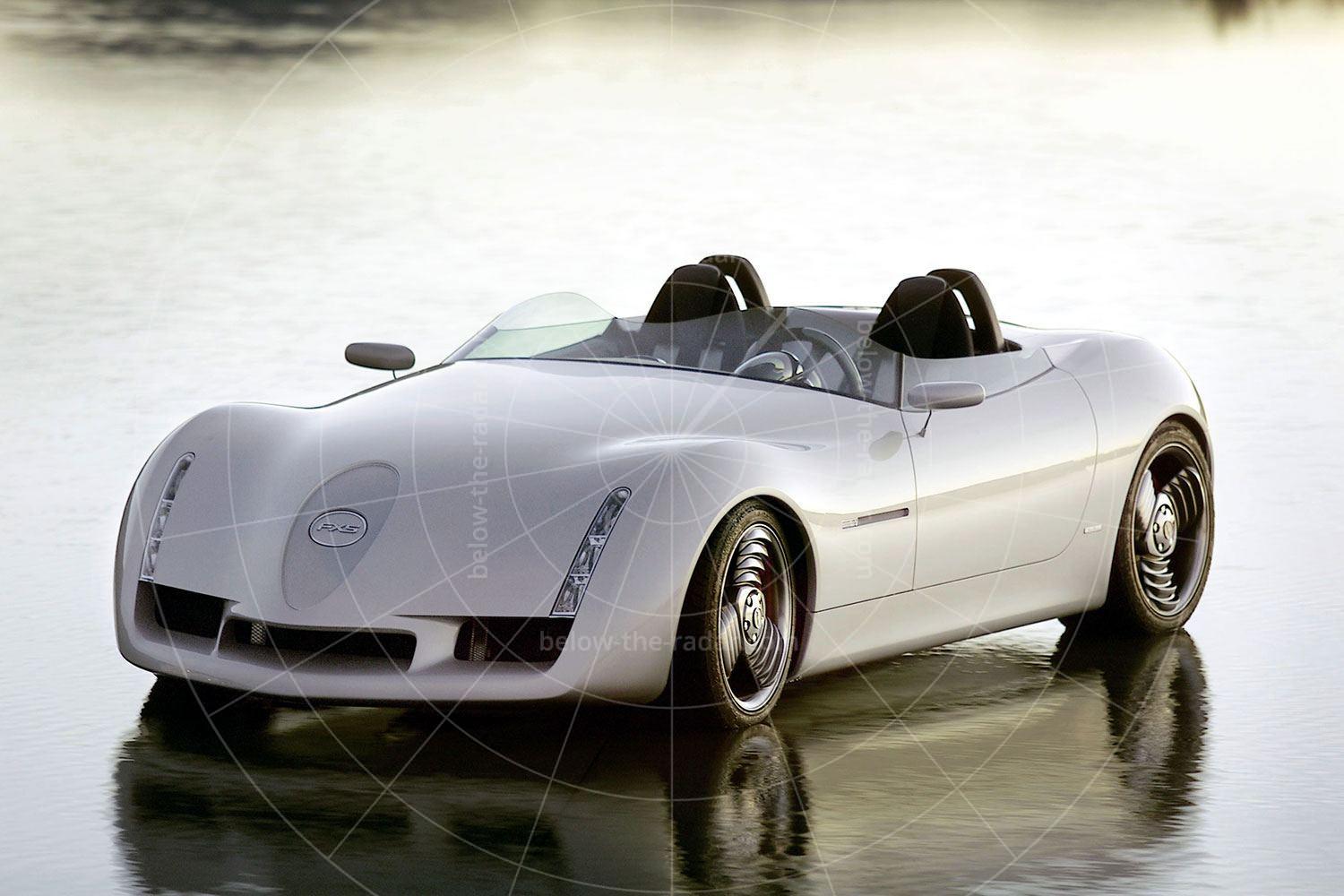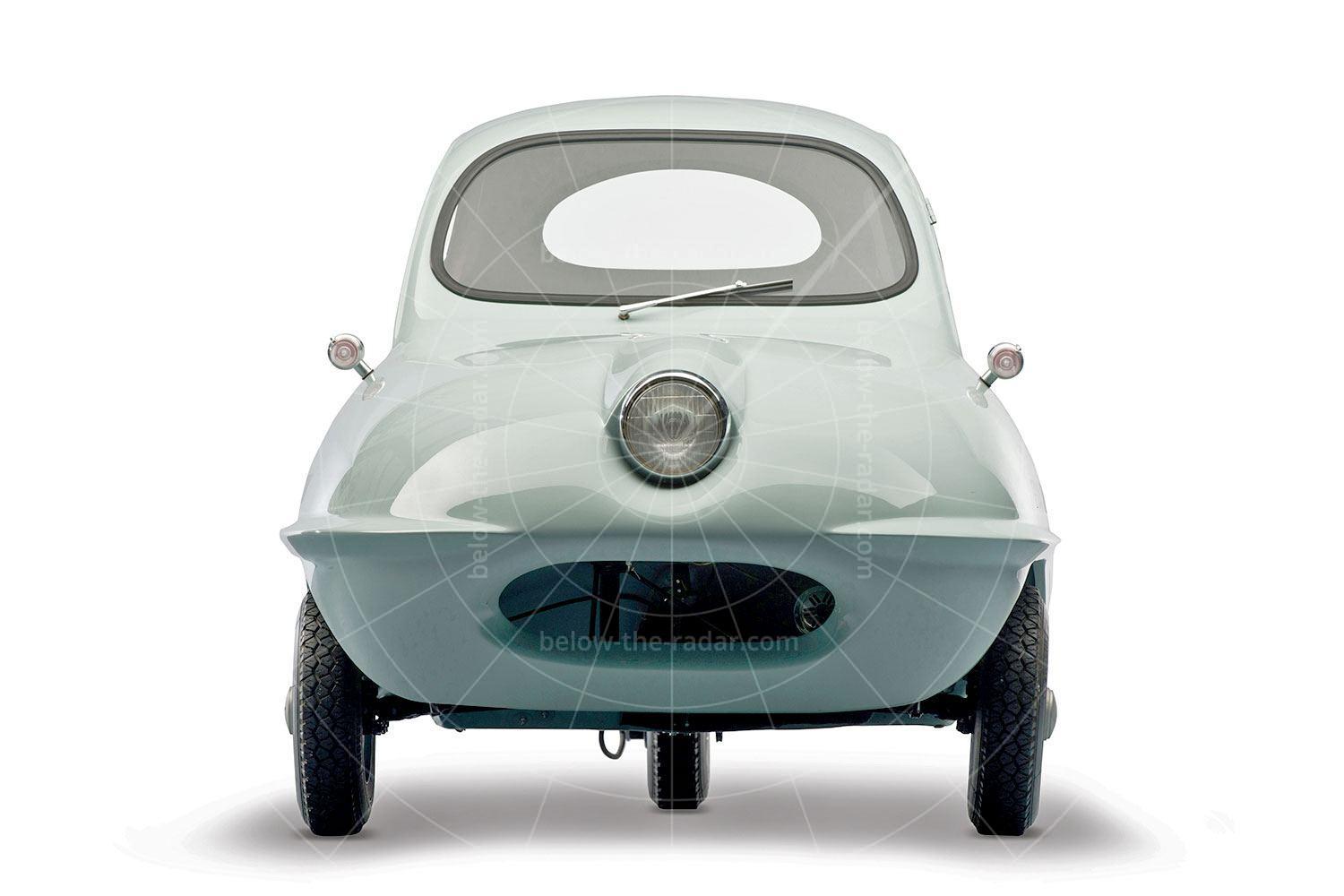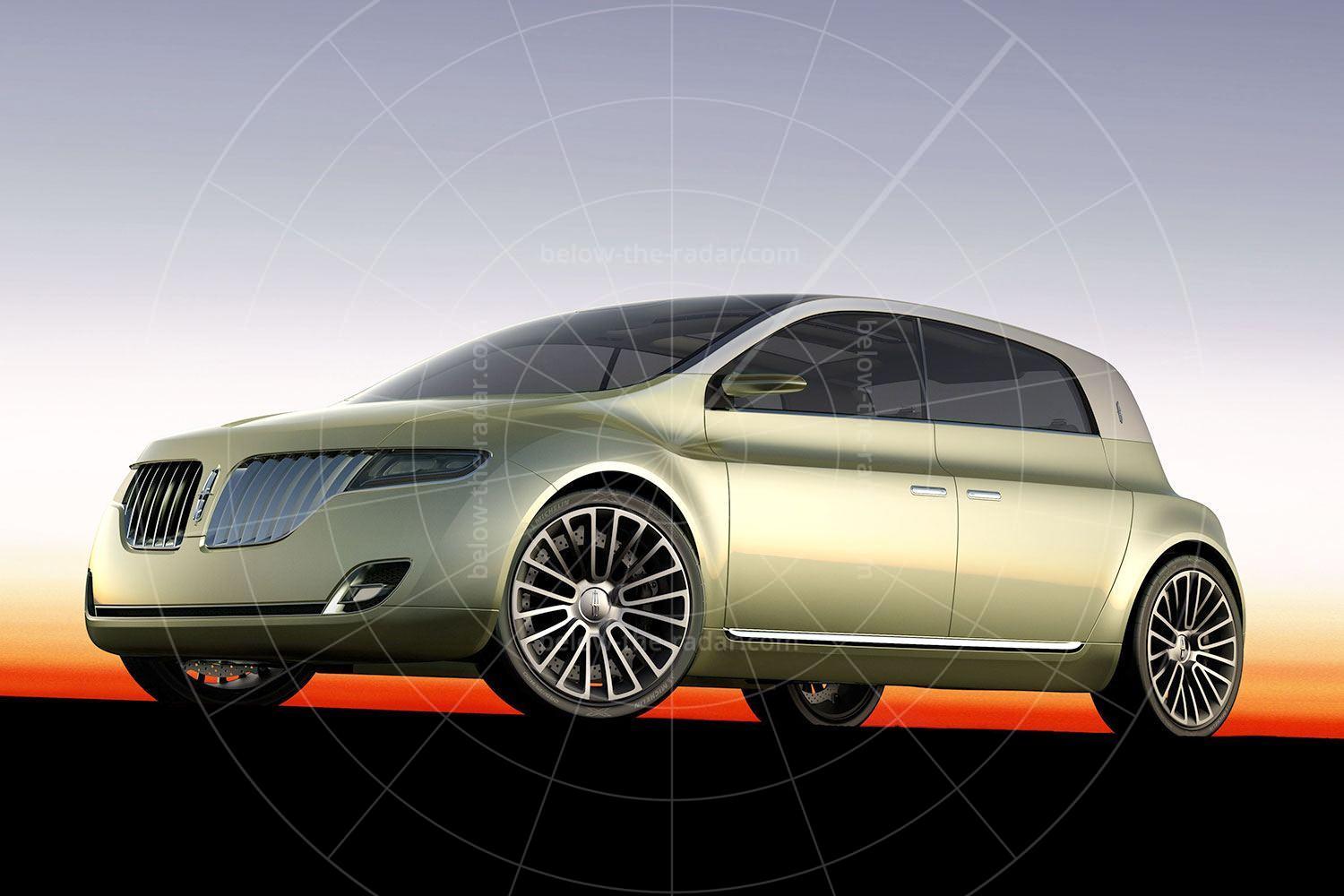Proving that you can have too much of a good thing, the FXS was one of an incredible 17 concepts unveiled on the Toyota stand at the 2001 Tokyo motor show. And with some far more improbable vehicles parked around it, that meant the FXS was always overlooked. Despite its 4.3-litre V8 and impractical two-seater roadster configuration, the FXS was actually quite a sensible car, even if it did appear to be pretty way out.
In keeping with the practice of giving all of its concepts a design theme, Toyota reckoned that the FXS was a car that featured a “simple and sexy form with a sense of presence”. Considering that was a vaguely understandable brief, it was pretty good for Toyota – even if the finished result was a vehicle that from the front bore a close resemblance to the Batmobile from the film Batman Forever.
At the front there were strip headlights, which climbed
up the outside edges of the front panel just before they met the wings. Although there was no grille, there were three large vents sitting just above the front spoiler – all in all, it was pretty radical. But in profile the FXS was less controversial and at the rear it was somewhat understated – almost to the point of being bland. A strip light that ran across the whole width of the rear panel incorporated the tail lamps, brake lights, indicators and reversing lights, while poking out of the rear valance was a pair of exhausts.
The three-spoke chromed alloy wheels on which the FXS sat were hardly seen as the last word in good taste in Europe, but as America was the biggest and most important market for Toyota's luxury sub-brand Lexus, the concept was designed with US buyers in mind. At least they showed off the meaty ventilated disc brakes very well, while they also looked very purposeful as they were wrapped in 245/40 R18 tyres at the front and 285/35 R18s items at the rear.
Paddle-shifted sequential manual gearboxes were beginning to become fashionable in mainstream cars by the time the FXS made its debut, so Toyota developed a new system to fit to its new baby. With six ratios to choose between, the transmission was operated by buttons behind the steering wheel.
The rest of the cabin was surprisingly featureless, with very little to distract the occupants as they whizzed along. A cluster of instruments was assembled directly in front of the driver, indicating road speed, engine revs, fuel level and oil pressure, but there was no multimedia system or other gadgetry. Everything was blue backlit and in a rather bizarre move, the centre console was trimmed in such a way that it looked as though a 1950s jukebox had been grafted on, although that wasn’t the intention of course…
Helping to ensure the handling was decently sporting the FXS was suspended by double wishbones at both ends, while great attention was paid to bodyshell rigidity, allowing the handling to remain predictable even when the car was being pushed really hard.
Although there was never a suggestion that the FXS could become a replacement for the Lexus SC430, the underpinnings of the former were based on those of the latter, which is why its all-aluminium V8 petrol engine was equipped with 32 valves and a pair of overhead camshafts. In standard showroom spec this delivered 282bhp and 419lb ft of torque, which was enough to take the SC430 from rest to 62mph in just 6.4 seconds before topping out at an electronically limited 155mph.
The FXS was never performance tested, but considering the similarities in dimensions and weight between the cars it would be a safe bet to say that the top speed and acceleration would be much the same. The FXS was blessed with a perfect 50:50 front:rear weight distribution, so the handling of the FXS should have been pretty neutral. But then, as the SC430 was always panned for its dynamics, the FXS probably couldn’t have been any less fun to drive.
| Vital statistics | |
|---|---|
| Debut | Tokyo 2001 |
| Engine | Front-mounted, 4293cc, V8 |
| Transmission | 6-speed sequential manual, rear-wheel drive |
| Power | Column 2 Value 4 |

